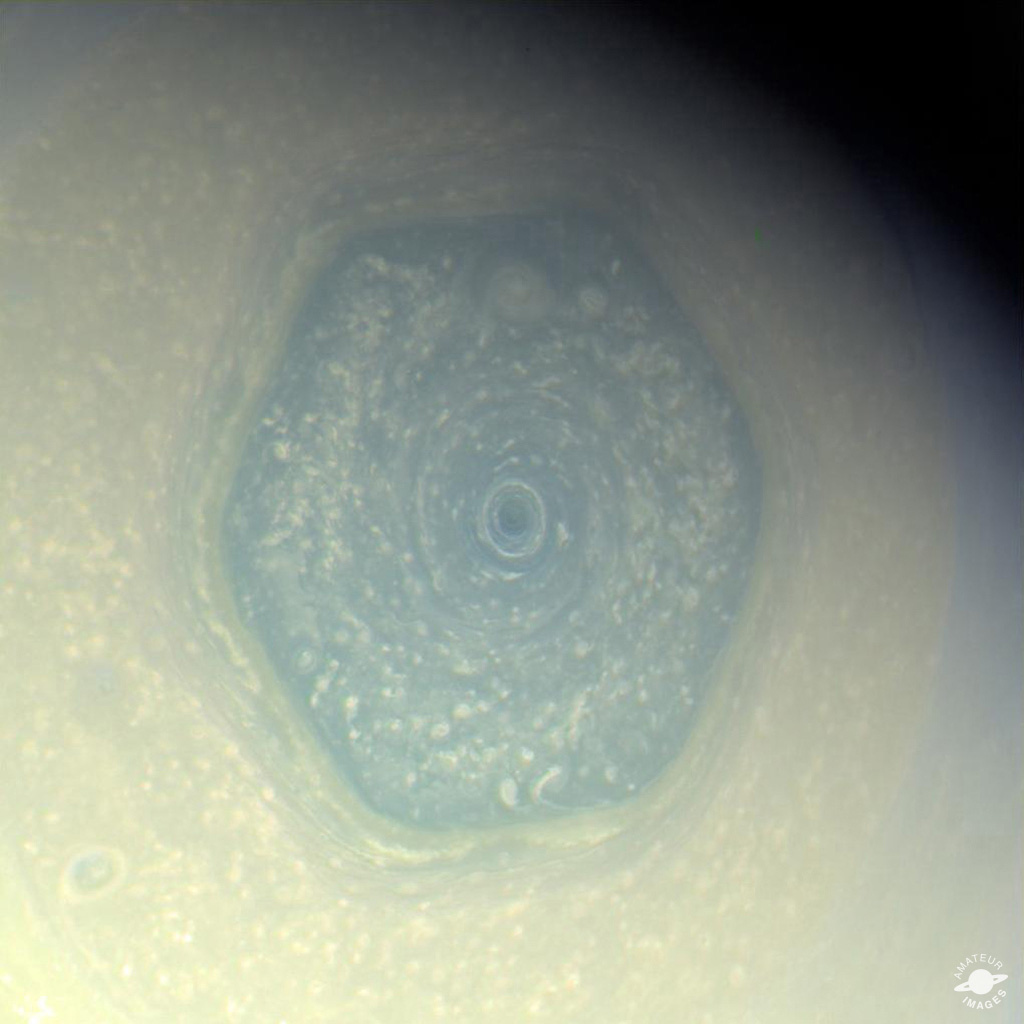Spectacular Saturn Images by 'Amateurs' Will Make Your Jaw Drop
Saturn's swirling clouds

Kevin M. Gill produced this false-color view of Saturn's clouds from raw images that Cassini captured on July 20, 2016. For those with photo-tech know-how, Gill said: "I mapped the CB2 filtered image (.75 micron wavelength) to red, MT2 (.727 microns) to green and MT1 (.619 microns) to blue."
Bizarre hexagon on Saturn

"This is a true color view of Saturn's north polar region, taken by Cassini's Imaging Science Subsystem (ISS) on June 26, 2013," the producer Val Klavans said in a NASA statement. "Saturn's mysterious hexagon is visible in the center."
Klavans added: "This composite is made of images that were taken on June 26, 2013 and received on Earth June 27, 2013. The camera was pointing toward Saturn at approximately 402,383 miles (647,573 kilometers) away, and the images were taken using the CL1, RED, BL1 and GRN filters."
Enceladus feeding the E ring

Val Klavans also created this Cassini image, showing the Saturnian moon Enceladus inside the E ring. "On July 19, 2013, you waved at Saturn. The Cassini spacecraft was there to snap a photo of not only us, but the Saturn system," Klavans said.
"This composite is made of images that were taken on July 19, 2013 and received on Earth July 20, 2013. The camera was pointing toward SATURN-ERING at approximately 740,000miles (1,200,000 kilometers) away, and the images were taken using the CL1, RED, BL1 and GRN filters," he added in a statement.
Get the world’s most fascinating discoveries delivered straight to your inbox.
Jeanna Bryner is managing editor of Scientific American. Previously she was editor in chief of Live Science and, prior to that, an editor at Scholastic's Science World magazine. Bryner has an English degree from Salisbury University, a master's degree in biogeochemistry and environmental sciences from the University of Maryland and a graduate science journalism degree from New York University. She has worked as a biologist in Florida, where she monitored wetlands and did field surveys for endangered species, including the gorgeous Florida Scrub Jay. She also received an ocean sciences journalism fellowship from the Woods Hole Oceanographic Institution. She is a firm believer that science is for everyone and that just about everything can be viewed through the lens of science.


